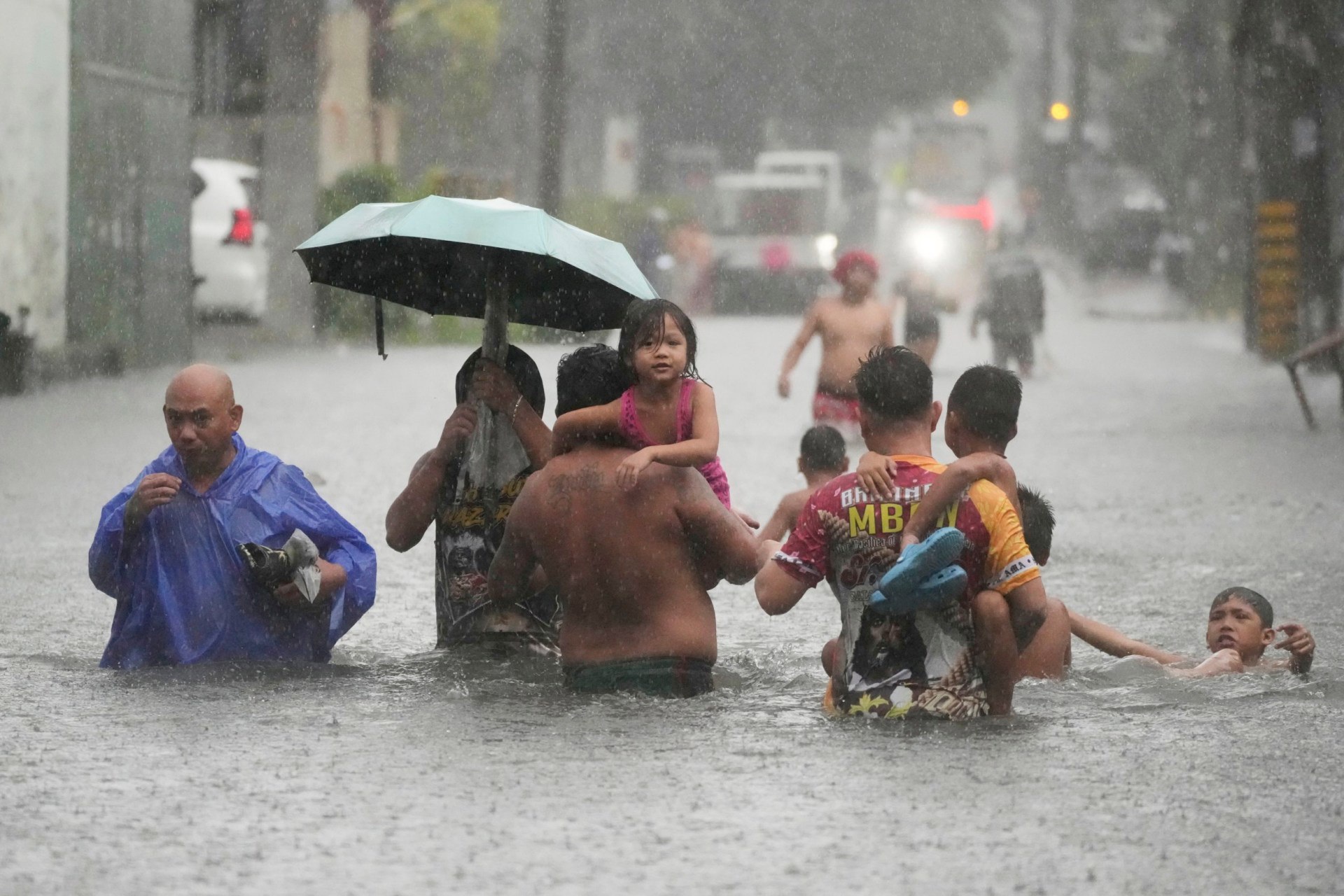Relentless rainfall and severe flooding have continued to batter the Philippines in the aftermath of Typhoon Wipha, leaving at least five people dead and displacing tens of thousands over the weekend.
The powerful weather system, now downgraded to a severe tropical storm, is currently moving toward northern Vietnam, where authorities are bracing for potential disaster.
As of 6 a.m. local time on Tuesday (23:00 GMT Monday), Vietnam’s national meteorological agency reported that Wipha was located approximately 60 kilometers (37 miles) offshore from the port city of Haiphong.
Packing winds of up to 102 kilometers per hour (63 mph), the storm was tracking southwest at a speed of 15 kilometers per hour (9.3 mph).
Though Vietnam has not yet reported casualties or property damage, authorities are on high alert.
The country’s weather service has forecast up to 500mm (20 inches) of rain, raising the risk of flash floods and landslides in low-lying and mountainous regions.
As a precaution, roughly 350,000 military personnel have been placed on standby to assist with potential rescue and relief efforts.
Wipha is expected to make landfall later Tuesday evening, likely hitting Hung Yen and Ninh Binh provinces, located just south of the capital, Hanoi.
The storm is forecast to weaken into a low-pressure system after coming ashore, but officials remain cautious given the storm’s track record in the Philippines.
Widespread Disruption in the Philippines
In the Philippines, the aftermath of Typhoon Wipha has left large parts of Metro Manila inundated.
Floodwaters surged through neighborhoods and highways, forcing schools and government offices to remain closed on Tuesday.
Much of the disruption was centered around the Marikina River, which overflowed after a night of relentless rainfall, prompting emergency evacuations.
More than 23,000 people living near the riverbanks in Marikina were evacuated to temporary shelters including schools, community centers, and covered courts.
An additional 25,000 residents were evacuated in Quezon City and Caloocan, both within the Greater Manila area.
Tragedy struck in Caloocan when an elderly woman and her driver were swept away while attempting to cross a swollen stream.
John Paul Nietes, an assistant supervisor at the local emergency operations center, confirmed that the pair’s vehicle had been located, but as of Tuesday, search and rescue teams had not recovered their bodies.
The National Disaster Risk Reduction and Management Council (NDRRMC) reported on Monday that five people had died due to storm-related incidents.
Another five individuals were injured, and at least seven remain unaccounted for.
The fatalities stemmed from various causes including drowning, electrocution, and collapsed structures.
Climate Impact and Regional Vulnerability
The Philippines faces an average of 20 typhoons or severe storms each year, making it one of the most disaster-prone countries in the Asia-Pacific region.
Vulnerable communities, particularly in impoverished areas, often suffer the most from the aftermath of such storms.
Experts warn that climate change is intensifying the impact of tropical storms.
Rising sea temperatures and shifting weather patterns are fueling stronger, slower-moving storms that dump more rain and cause greater devastation.
This year alone has seen significant weather-related catastrophes.
Earlier in the year, Super Typhoon Yagi slammed into Vietnam, leaving approximately 300 people dead and causing an estimated $3.3 billion in damage.
It underscored the vulnerability of Southeast Asia to increasingly extreme weather events.
Preparing for Wipha’s Landfall in Vietnam
As Wipha approaches Vietnam, authorities are racing to mitigate the storm’s potential damage.
Emergency shelters have been prepared, flood defenses strengthened, and warnings issued in at-risk areas.
The government has advised residents in low-lying and coastal zones to remain indoors and prepare for possible evacuations.
With heavy rains already forecast and the storm nearing landfall, the region is facing another stern test of its disaster preparedness.
While the worst may have passed for the Philippines, Vietnam is now directly in Wipha’s path.






